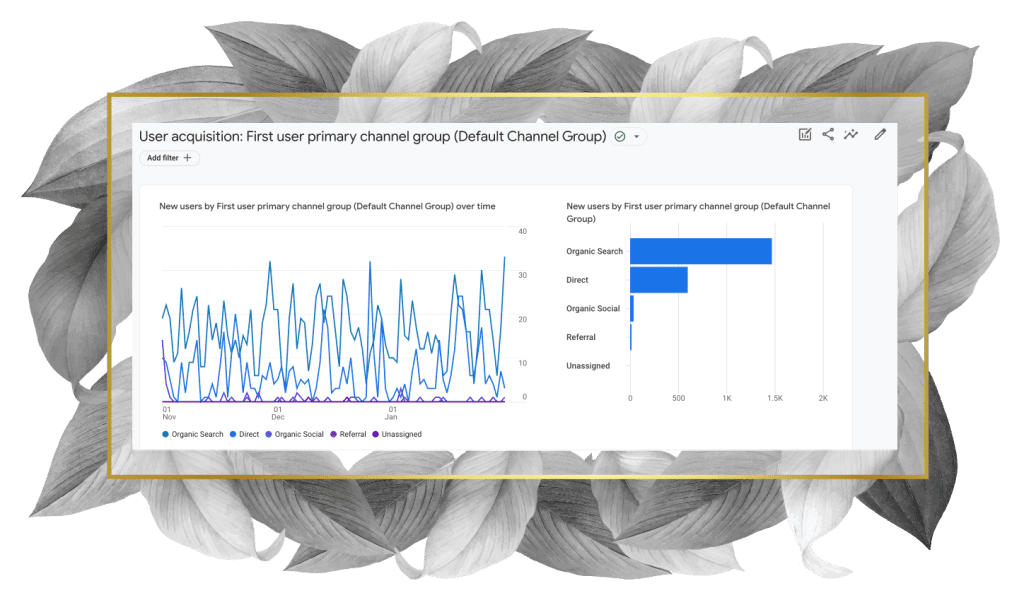
Understand your users with the latest Analytics update
When you create and launch your website, typically you want to know how many people are using it, and if they’re using it well. For e-commerce sites, it’s critical to have real-time stats to see which products are generating the best ROI. With B2B websites, it’s different, but each piece of content is also generating ‘revenue’ to providing your company with great value. Understanding the stats is one step toward that process of getting the full picture.
Google Analytics Major Update to Interface
One of Google’s core offerings for businesses on the web has been Google Analytics. Recently they rolled out their latest version GA4, and since last year their previous version, UA, has been taken off the shelf so to speak. In other words, if you want to use Google Analytics you must use GA4.
Those who have been using UA for many years have been finding the transition tough. It is not just a new interface, but the whole data collection has been transformed!
Transitioning from Universal Analytics (UA) to Google Analytics 4 (GA4) has brought about a significant shift for businesses aiming to understand and optimize their online presence. Mainly, GA4 uses ‘events’ to trigger information. And you can now configure your events in real-time with GA4 or using Google Tag Manager (GTM). This is great especially for e-commerce and GA4 offers built-in stats for your sales.
But what about the challenges for corporate websites? Let’s explore the pros and cons of using GA4 in the B2B industry and see where businesses can optimize their statistics and content performance.
Pros to using GA4
1. Enhanced User-Centric Model:
GA4 focuses on a more user-centric approach, emphasizing individual user journeys across devices. This provides a more holistic understanding of user interactions, enabling better-targeted marketing efforts.
2. Event-Driven Tracking:
GA4 adopts an event-driven model, allowing businesses to track specific user interactions more comprehensively. This flexibility is especially beneficial for e-commerce sites and B2B platforms to tailor analytics based on unique user engagements.
3. Improved Cross-Platform Tracking:
With GA4, businesses can seamlessly track user behavior across various platforms, including mobile apps. This is invaluable in the modern digital landscape where users switch between devices.
4. Machine Learning and Predictive Metrics:
GA4 incorporates machine learning capabilities, offering predictive metrics that can help businesses anticipate user behavior. This enables proactive decision-making based on emerging trends.
5. Privacy-Centric Features:
GA4 aligns with evolving privacy standards by providing options for more granular user consent controls. This ensures businesses can maintain compliance with data protection regulations.
Cons to using GA4
1. Learning Curve:
The transition from UA to GA4 comes with a learning curve. Businesses accustomed to the older interface may face challenges adapting to the new features and settings.
2. Limited Historical Data:
GA4 does not support importing historical data from UA, limiting the ability to compare long-term trends accurately. This may hinder businesses that heavily rely on historical data for strategic decision-making.
3. Customization Complexity:
While GA4 offers more flexibility in terms of tracking events, the setup for customization can be more complex. This might pose a challenge for smaller businesses or those without dedicated analytics teams.
4. Reporting Differences:
Reporting structures differ between GA4 and UA, making it challenging for businesses to directly compare metrics. Adjustments may be necessary to align reporting practices with the new model.
5. Feature Parity Concerns:
Some users have raised concerns about GA4’s feature parity with UA. While Google is actively working on feature updates, businesses may encounter limitations or differences in functionality during the transition.
The move to GA4 signifies a shift towards a more user-centric and privacy-conscious analytics model. While the transition may pose challenges, the benefits of enhanced tracking capabilities, machine learning integration, and cross-platform insights make GA4 a promising tool for businesses looking to stay ahead in the dynamic digital landscape. It’s crucial for organizations to carefully assess their specific needs and resources before embracing GA4 for their corporate websites.
Analytics support… Contact us!
If you need help understanding your statistics with GA4 give WS a call. We have been spearheading ways to leverage and maximize GA4’s power. 😉